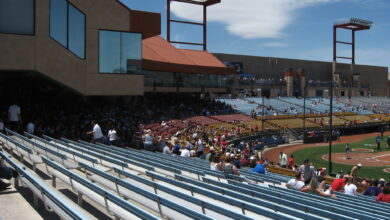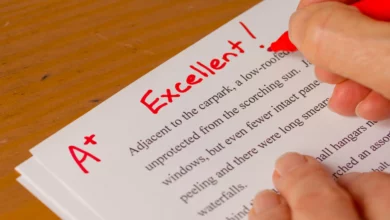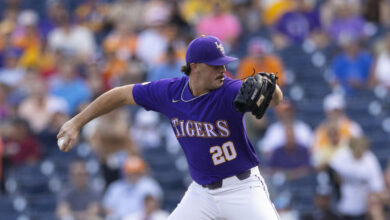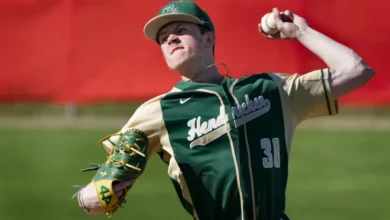
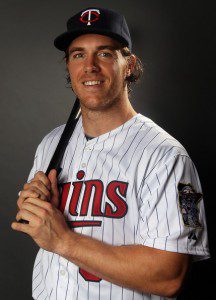
Perusing the blogosphere, it seems there are a few different perspectives on the state of the upper levels of the Twins farm system. One camp says the vast majority of impact-prospects in the system are at the lower levels, while the double-A and triple-A affiliates have nothing better to offer than some bench guys and second-division starters. Other, more optimistic folks, point to a number of guys who could fill big-league roles within the next couple of years, guys who may not be studs, but look to be upgrades over what the Twins currently have.
Part of the issue with this debate is the term “impact-prospect.” It gets thrown around a lot, but it’s tough to pin down to an objective definition. For instance, just about everybody would call Miguel Sano an impact-prospect, few though, would have done the same with Danny Valencia a few years ago. Then Valencia came up in 2010, proceeded to rake while playing a good third base and put up 2.7 WAR in just 322 PA – absolutely an impact performance. The Twins constantly find guys who catch fire upon call-up (Chris Parmelee last year, Brian Duensing, Lew Ford, Bobby Kielty, Doug Mientkiewicz) despite lacking the talent to be long-term starters. They all had stretches — years even — where they were impact players, despite not being seen as impact prospects.
The hope, I guess, is for a few players in the upper levels to do the same. The Twins need some guys to step in and provide league-average or better production on the cheap. The fact is, as a team with a mid-level payroll (and a lot of money invested in two players), Minnesota needs to fill a few spots with league-minimum guys. So, let’s take a look at players who might have an impact on the Twins in the next two seasons, starting with position players.
1. Joe Benson OF
Benson is the closest thing to an industry consensus “impact-prospect” on this list. He’s made two of the big three (Law, BA, Golstein at BP) top 100 rankings, coming in at 99 on BA’s list and 90 on Goldstein’s list at BP. Benson has, like most Twins prospects, spent ample time in the minors (2012 will be his seventh season) and he just turned 24. Repeating double-A last year, he showed the tools that made him a second-round pick in 2006. He hit a robust .285/.388/.495 good for a 141 wRC+ all while playing quality defense. He struggled mightily, however, during his September call-up, hitting just .239/.270/.352 in 74 PA’s in the bigs.
Benson will always have a lot of swing-and-miss in his game (he’s only once posted a K-rate under 20 percent (’06) and the .285 average he put up last year was the best of his career), but he should bring enough secondary skills to the table to offset his contact issues. He’s big and fast, the kind of guy who could post consistent 20-20 seasons, while playing excellent defense in a corner and maybe play some center as well. He’s always posted solid walk rates, nearly reaching 12 percent at New Britain last year. He’ll likely begin the year at triple-A, as he’s still behind Span, Revere, Plouffe, Willingham and Doumit on the outfield depth charts. I’ve no doubt, though, that we’ll see him at some this season, and hopefully in a full-time starting role in 2013. At the very least, he can be a solid platoon guy in a corner, and if he can solve some of his contact issues, he could turn into a 3-4 win outfielder.
2. Brian Dozier 2B/SS
Dozier was essentially a non-prospect entering the 2011 season. An eighth rounder in 2009, he posted solid but unspectacular numbers in two minor-league seasons. However, he’s not the possessor of the physical gifts that often offset statistical production in analysis of prospects. In 2011, though, he began the year by destroying (151 wRC+) Fort Myers, earned a midseason call-up to New Britain and just kept hitting, rocking a .318/.384/.502 line at double-A that had Ron Gardenhire clamoring for a late-season call up to the show. The only caveat to those number is Dozier’s age. A senior sign, he played last season at the age of 24, quite old for single-A and double-A ball.
Dozier isn’t long on tools, but he can really hit and has soft hands that provide solid defense in the middle infield. It doesn’t look like he has the range or arm to play short, but he should be able to play a quality second base while hitting enough to justify the position change. Dozier has earned rave reviews out of Fort Myers this spring and could likely handle a spot in the infield on opening day. As it stands, he should begin the year at triple-A and be first in line for a call-up should Jamey Carroll or Alexi Casilla struggle or hit the DL. Dozier looks like he could be about a league-average second baseman, posting 2-3 wins annually–perfectly acceptable for a guy making the league minimum.
3. Chris Parmelee 1B
Parmelee is another guy who hit the ball well at double-A last year, owning a .287/.366/.436 line that earned him a cup o’ tea in September. Parmelee proceeded to impress with the Twins, mashing his way to a 187 wRC+ in 88 PA’s. Parmelee was rated as one of the best power-hitters coming into the 2006 draft (where the Twins took him with their first selection) and put up good power numbers in the low minors. He then reworked his swing to make more contact and hasn’t shown the same power since.
Parmelee’s September was impressive, but we’ve got a long minor-league track record that would indicate that he doesn’t possess the bat to play first base in the bigs and doesn’t possess the physical tools to play defense at any other position. In what was termed a breakout by many, Parmelee slugged only .436 as a 24-year-old at double-A last season, a number dwarfed by middle infielder Brian Dozier’s .502 and hardly acceptable for a first baseman. Parmelee could see a lot of time this season depending on Justin Morneau’s health, but unless he can hit for a little more power, he’s likely nothing more than a decent bench bat or platoon guy in the majors.
4. Chris Herrman C
Herrman signed as an outfielder after the 2009 draft but has since converted to catcher. Like any decent college guy should, he destroyed the Appy League as a 21-year-old in 2009 but disappointed by hitting .219/.310/.301 in the FSL in 2010. Repeating the level last year, however, Herrman mashed a .380 wOBA in 24 games before moving up to double-A where he posted a very respectable 119 wRC+ (.356 wOBA). For what it’s worth (likely very little), Herrman put the hurt on the Arizona Fall League after last season, hitting a bonkers .380/.456/.620 (.478 wOBA).
Herrman is, by all accounts, still learning the intricacies of catching but has the makings of a solid defender, nailing a solid 37% of runners over his career. He still has to prove that 2011 was his true talent with the bat, and the plethora of triple-A catchers* in the Twins’ system means he’ll likely repeat double-A. While he lacks great contact skills or impact power, Herrman has shown excellent plate discipline in the minors and could be in for a breakout year as a hitter. It’s unlikely we’ll see any of Herrman this season, but continued improvement, coupled with Joe Mauer’s iffy future as a catcher, could see Herrman competing for a roster spot right out of the gate in 2013.
*Make no mistake, Herrman is the only real catching prospect in the system.
5. J.R. Towles C
Towles’ inclusion on this list is a bit of a cheat as he’s not really a prospect at all (that should tell you a bit about my view of the Twins’ system at the upper levels). Back in 2008, Towles was a prospect, in fact he was a hell of a prospect ranking 53 on BA’s annual list. He was coming off a .324/.425/.551 line in double-A and built upon that hitting .304/.370/.500 in triple-A that year. Unfortunately, he hasn’t cut mustard as a big-leaguer hitting a Butera-esque .187/.267/.315 in 155 games.
Towles is getting a chance to compete with Butera to make the roster as the team’s inevitable third catcher. He has continued to hit at triple-A and the hope is that he can at least provide a modest upgrade with the bat – maybe a wOBA north of .300. He’s posted pretty much neutral defensive numbers in the bigs, so defense shouldn’t be much of a concern. The upside here is minimal, but taking a flyer on a guy with a strong minor-league track record was a no brainer for Terry Ryan this offseason.
A few more to keep an eye on:
Ray Chang IF
Chang is a career minor-leaguer who has played all around the diamond, providing solid defense and unspectacular offense. He hit well at Rochester last year and could be in the mix as a utility guy should somebody go down.
Florimon was claimed from the Baltimore Orioles this offseason. He’s got a reputation as a defensive ace (though the numbers haven’t always backed that up) and posted solid (.267/.344/.396) numbers with the bat at double-A last season. He’s yet another guy with limited upside who could be in the mix as a utility infielder.
Rene Tosoni OF
Tosoni lost his prospect eligibility last year thanks to a number of injuries in Minnesota. Up to that point, he had posted solid minor-league numbers over four seasons. He struggled in the bigs – he clearly wasn’t ready – but has the makings of an okay fourth outfielder and can do a little bit of everything.
There is very little to be hopeful about as far as minor-league hitters go. Benson and Dozier could develop into solid major-leaguers but are far from sure things. Beyond that there’s hardly any upside. The glass-half-full outlook here is: (a) the upper minors as a whole have been weak the last year or two, and (b) the list of pitchers (which I’ll write up in the next couple of days) looks to be a lot stronger.


